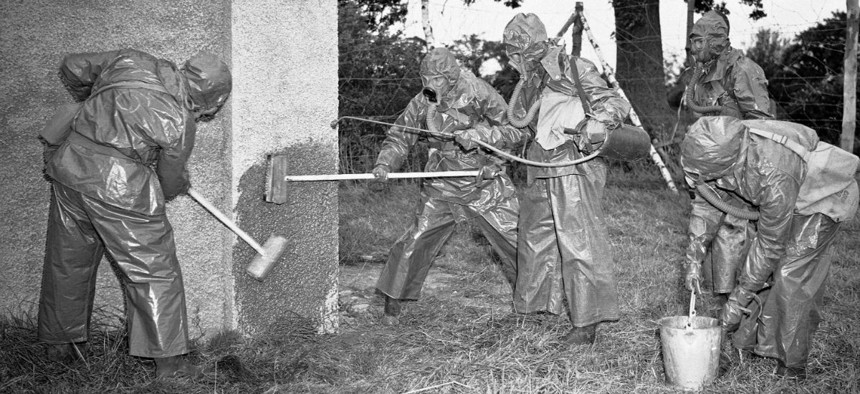How an NPR Librarian Outdid VA Researchers in Finding Mustard Gas Victims
Agency fell short in efforts to trace World War II veterans exposed to mustard gas during experiments.
The Veterans Affairs Department knew there were 4,000 World War II veterans who had been exposed to mustard gas during chemical experiments, the existence of which wasn’t declassified until the 1990s.
But the agency’s effort to track them down and compensate any who suffered injuries went almost nowhere, according to exclusive findings by NPR’s investigative unit in a report broadcast Tuesday.
“In more than 20 years, the VA attempted to reach just 610 of the men, with a single letter sent in the mail,” NPR reporters said. “Brad Flohr, a VA senior adviser for benefits, says the agency couldn't find the rest, because military records of the experiments were incomplete. There was no identifying information, he says. No Social Security numbers, no addresses, no ... way of identifying them."
But an NPR research librarian, working just two months using VA’s own list to scour public records, found more than 1,200 of the subjects.
The radio journalists interviewed more than 40 living test subjects and family members. The volunteer troops had been unwittingly subjected to mustard gas to test the effectiveness of masks inside a gas chamber –at a time when U.S. intelligence feared use of such gas by the Germans and Japanese.
The veterans contacted by NPR “describe an unending cycle of appeals and denials as they struggled to get government benefits for mustard gas exposure,” the news report said. “Some gave up out of frustration.”
The VA stated that it has been processing the claims according to requirements for proof in statute and regulation.
NEXT STORY: Senate Confirms Neffenger to Rescue TSA




